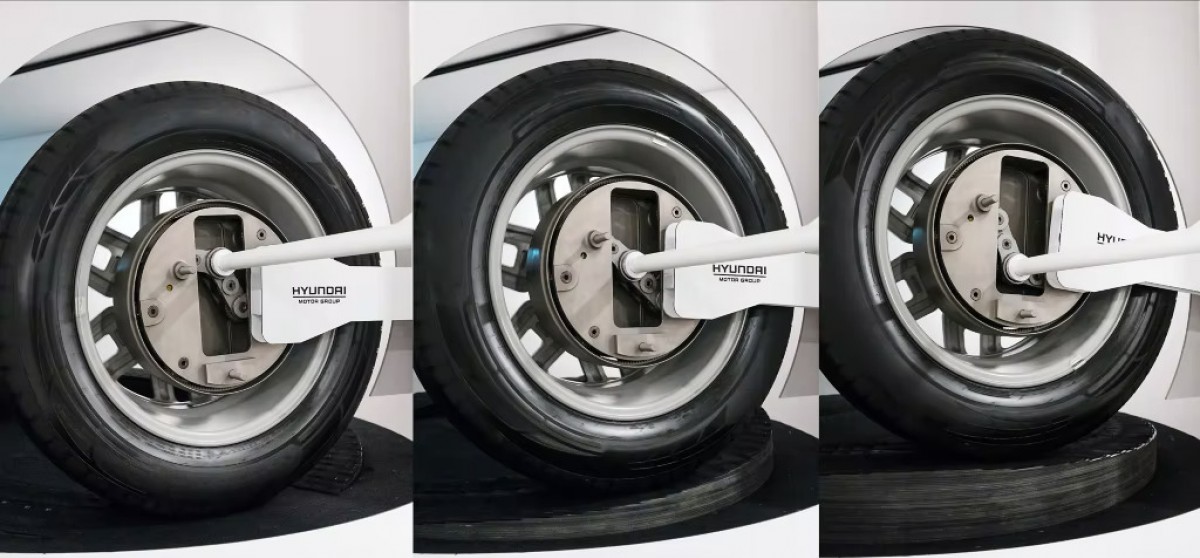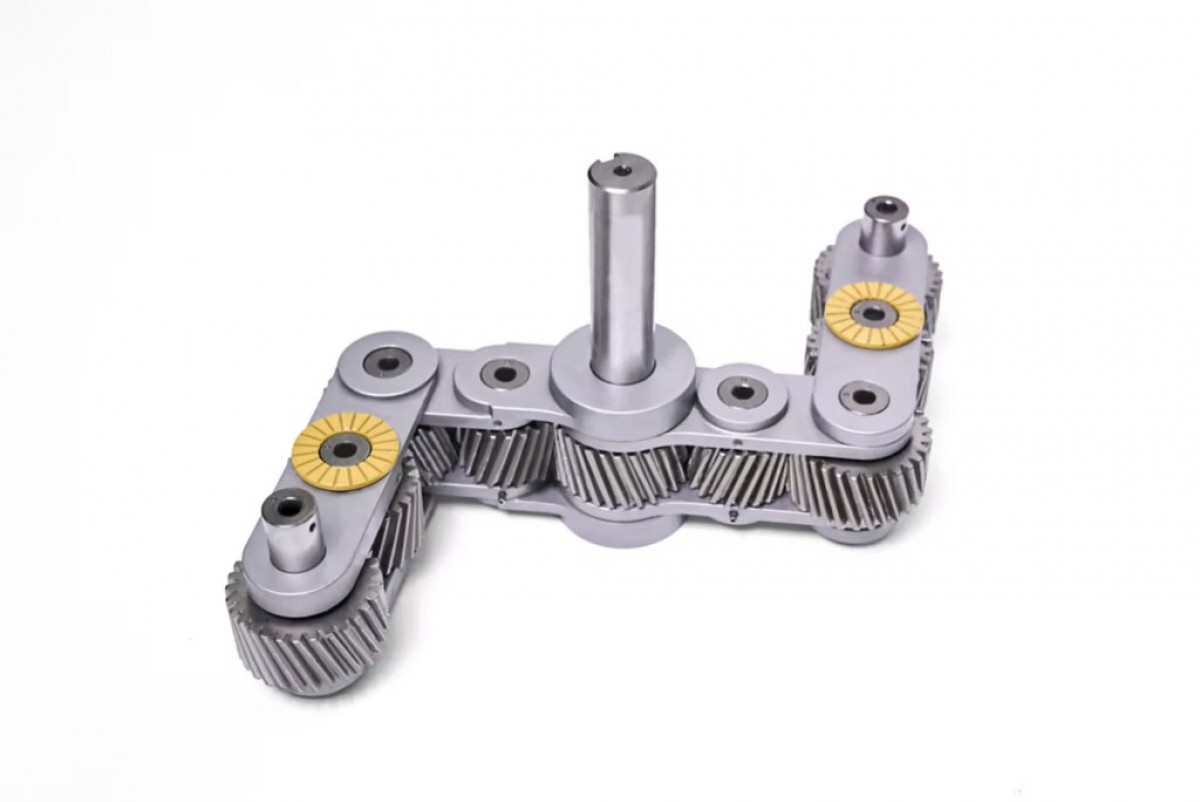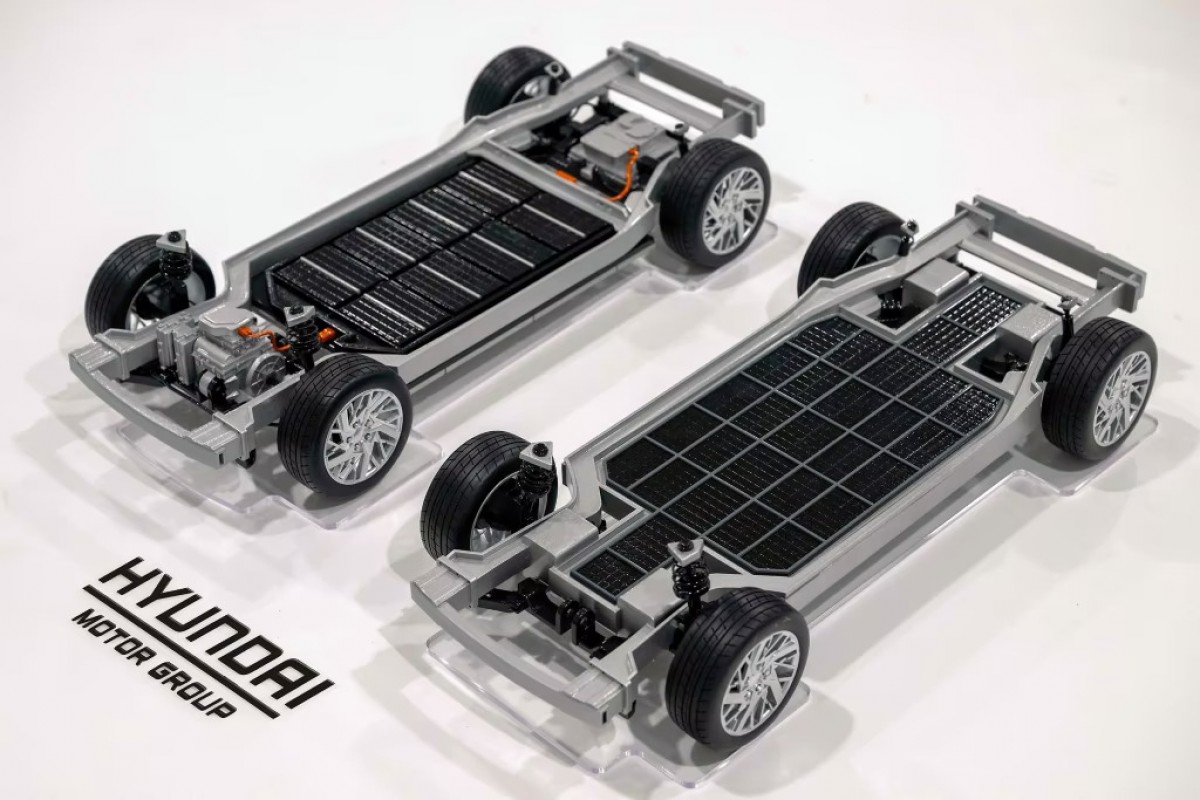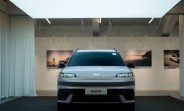Hyundai's "Uni Wheel" claims to revolutionize EVs
The ubiquitous CV joint is an essential component found in virtually every car with a driven independent axle. It has been the reliable workhorse of the automotive world, efficiently transmitting power from the engine to the wheels, even when the wheels are moving up and down or turning. It's a simple, robust, and time-tested design. But leave it to Hyundai and Kia to challenge the status quo with their unconventional creation, the Uni Wheel.
The Uni Wheel, characterized by its box-like structure, might look like something out of a science fiction movie, but it is indeed a real concept designed to replace traditional CV joints. It features a slot for the central sun gear to move up and down, along with articulating arms filled with four planetary gears each. These gears work together to transfer power to a ring gear connected to the actual wheel. It's a departure from the conventional, and its creators claim it offers several advantages. However, as with any groundbreaking innovation, there are questions and skepticism abound.

One of the primary issues with traditional CV joints, especially when subjected to extreme angles, is their tendency to wear out prematurely. This is often observed in vehicles with large ground clearance. The Uni Wheel addresses this problem by eliminating both inner and outer CV joints and shortening the driveshaft. In theory, this should result in improved efficiency and longevity.
To make the Uni Wheel work, individual electric motors are placed near the Uni Wheel assembly, necessitating two motors per axle. This approach eliminates the unsprung weight that comes with in-wheel motors, while freeing up valuable space in the center of the vehicle. While this sounds promising, it raises questions about where other crucial components like controllers, inverters, and onboard chargers will be located. The relocation of the motors may not necessarily mean a reduction in overall complexity.
On the positive side, the Uni Wheel handles drive reduction internally, effectively combining the functions of the CV joint and drive reduction into a single unit. This represents a clear packaging improvement and should reduce weight, all else being equal. Power delivery and efficiency also remain consistent throughout the Uni Wheel's range of motion. Both Hyundai and Kia highlight the Uni Wheel's scalability, making it suitable for a wide range of applications, from wheelchairs to robots to cars.
However, there are legitimate concerns. The intricate meshing gears within the Uni Wheel introduce potential wear points and may generate friction, noise, vibration, and harshness – factors that engineers traditionally work to minimize. Gears are known for their characteristic whine, while CV joints tend to operate more quietly.

Another intriguing question arises regarding the Uni Wheel's suitability for use on a steerable axle. While the video demonstrates small-angle turns where the motors pivot with the wheel, it's unclear whether there is enough room to accommodate full-lock steering on the horizontal axis. The boots shown at the wheel end of the shaft may house CV joints, which could be more suitable for steering maneuvers. If that’s the case then this hardly is simplifying - it’s quite the opposite.
Lastly, the matter of friction brakes is worth considering. Regenerative braking, while effective for everyday driving, may not suffice for emergency stops. Mounting a brake to the driveshaft inboard at the motor could add additional length and depth to the Uni Wheel assembly, potentially complicating its design.

The Uni Wheel concept is undeniably fascinating, showcasing the spirit of out-of-the-box engineering. It presents a range of potential benefits, including improved efficiency, reduced wear, and increased in-frame or in-body space for additional features or cargo. However, it also raises legitimate concerns about noise, wear, and its suitability for steerable axles. As of now, it remains a concept, and we eagerly await further development and real-world testing from Hyundai and Kia.
It will be interesting to compare the Uni Wheel's merits and drawbacks with the latest ultra-light in-wheel motors - like the ones created by Orbis Electric, with integrated disc brakes. In fact, those motors probably deserve their own article since the company claims to offer an “EV in a box” - a simple 3-hour EV conversion for any vehicle. That’s a big claim worth investigating.
Reader comments
- Anonymous
- Fv1
According to my initial considerations, this is only feasible for unsteered wheels. For steered wheels, you would need something like a CV again. But perhaps not a bad idea for a non-steered rear axle.





Facebook
Twitter
Instagram
RSS
Settings
Log in I forgot my password Sign up